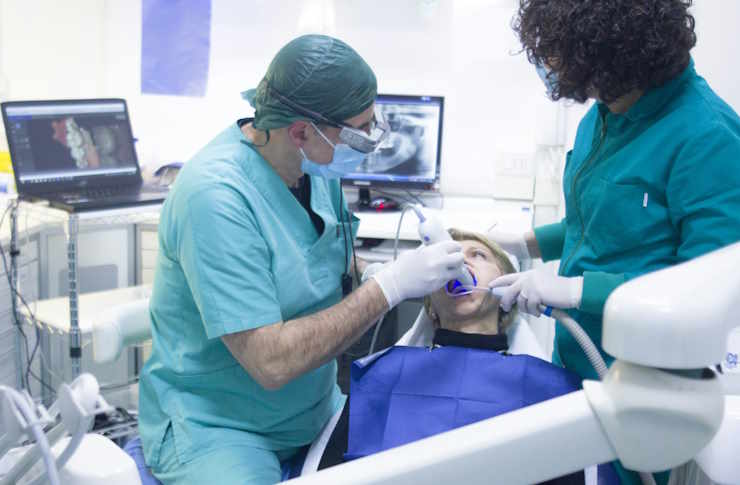Radiography Training Paths for Aspiring X-Ray Techs
Explore the pathways into x-ray technician training, from short dental radiography certificates to accredited two-year radiologic technologist degrees. Learn about course content, clinical experience, radiation safety, required skills, certification steps, and where to find reputable programs and accreditors.

This article is for informational purposes only and should not be considered medical advice. Please consult a qualified healthcare professional for personalized guidance and treatment.
Overview
Training to become an x-ray technician opens doors to hands-on imaging roles across healthcare settings — from dental offices to hospital radiology suites. Programs range from brief certification courses that focus on dental imaging to comprehensive associate degrees that prepare students for full radiologic technologist credentials. Instruction typically blends classroom theory, radiation protection, patient care, and supervised clinical practice to develop the competencies employers expect.
What dental radiography training includes
Courses in dental radiography teach the imaging techniques most often used in dental care: intraoral projections (bitewing, periapical) and extraoral views (panoramic imaging). Typical topics include head and neck anatomy, correct patient and receptor positioning, exposure settings, digital image capture and processing, and infection control protocols. Students also learn methods to reduce radiation exposure while obtaining diagnostic-quality images and how to identify common dental and maxillofacial findings on radiographs. Dental radiography instruction is commonly embedded within dental assistant programs or offered as targeted certification classes for licensed dental personnel.
Program lengths and formats
Program duration depends on the credential you pursue and local regulations. Options include:
- Short certificate courses: Several weeks to a few months; often aimed at dental assistants seeking a limited radiography credential.
- Associate degree programs: Typically two years; these accredited programs cover radiographic physics, anatomy, imaging procedures, patient care, and extensive clinical rotations.
- Hybrid and accelerated options: Some schools provide online theory combined with local clinical placements to shorten on-campus time.
Before enrolling, verify what credential a program prepares you for (limited dental radiography certificate vs. full radiologic technologist licensure) and whether it meets your state or regional licensing requirements.
Essential skills for technicians
A competent x-ray technician combines technical know-how with strong interpersonal and safety practices. Key abilities include:
- Technical proficiency: Operating imaging equipment, positioning patients accurately, selecting appropriate exposure factors, and evaluating image quality.
- Radiation safety: Applying ALARA (as low as reasonably achievable) principles, using shielding, and maintaining dose records.
- Patient communication and care: Explaining procedures, alleviating anxiety, and assisting patients with mobility or special needs.
- Attention to detail: Correct documentation, image labeling, and adherence to infection control.
- Digital literacy: Using digital radiography systems and electronic health records is increasingly essential.
Employers often value teamwork and flexibility since technologists interact with radiologists, dentists, nurses, and administrative staff.
Career paths and specialization
Initial radiography training leads to roles in hospital radiology departments, outpatient imaging centers, urgent care clinics, and dental practices. After gaining experience and required credentials, many technologists specialize in modalities such as computed tomography (CT), mammography, interventional radiography, or advanced dental imaging. Career progression can also move toward supervisory roles, educator positions, or further schooling in allied health fields.
How to evaluate and find programs
When researching training options, prioritize program accreditation and alignment with certification or licensure requirements. Accredited associate degree programs in radiologic technology are frequently offered by community colleges and technical institutes and include structured clinical rotations that are essential for skill development. Dental radiography certifications may be available through dental assistant curricula or short, stand-alone courses.
Use professional organizations and accrediting bodies to confirm program quality and exam eligibility. Reach out to schools directly to ask about clinical hours, instructor qualifications, pass rates on credentialing exams, and tuition or financial aid options.
| Provider Name | Services Offered | Key Features/Benefits |
|---|---|---|
| American Registry of Radiologic Technologists (ARRT) | Certification and credentialing | Establishes certification standards and eligibility for radiologic technologists |
| American Society of Radiologic Technologists (ASRT) | Education resources and professional development | Provides continuing education, practice standards, and career tools |
| Commission on Accreditation of Allied Health Education Programs (CAAHEP) | Program accreditation | Accredits radiography and allied health programs to ensure educational quality |
| American Dental Association (ADA) | Guidance for dental radiography best practices | Offers recommendations, safety resources, and practice guidance for dental imaging |
| Community colleges & vocational schools | Degree and certificate programs in radiography/dental radiography | Local hands-on clinical training, often offering accredited associate degrees or certificates |
Cost information varies by program and location. Contact each provider or school directly for current tuition, fees, and financial aid options.
Verifying details and avoiding surprises
Program offerings, admission requirements, and regulatory standards can change. During research for this article, a data request returned a “Too Many Requests” error; prospective students should confirm current program details — including accreditation status, eligibility for certification exams, clinical placement availability, and scheduling — directly with the institution or accrediting agency.
Making the right choice
Choose a program that matches your career goals: a short dental radiography certificate is suitable for clinicians seeking a limited scope in dental imaging, while an accredited associate degree prepares you for broader practice as a radiologic technologist. Consider factors such as clinical rotation quality, accreditation, faculty experience, graduate certification pass rates, and how the curriculum aligns with local licensure requirements.
Investing time in accredited, hands-on training will build the technical skills, radiation-safety habits, and patient-care competencies needed for a successful imaging career. Verify program details with professional organizations and training providers before applying to ensure the pathway you choose supports your intended scope of practice and certification goals.
This article is for informational purposes only and should not be considered medical advice. Please consult a qualified healthcare professional for personalized guidance and treatment.






